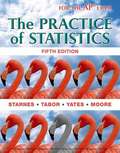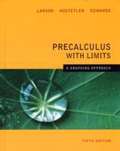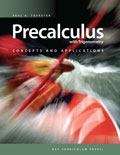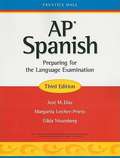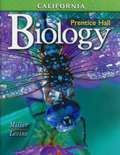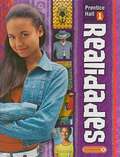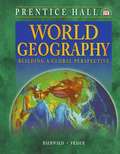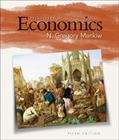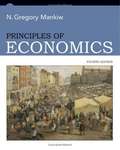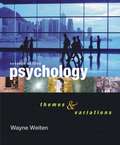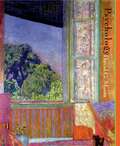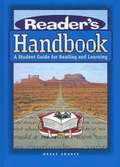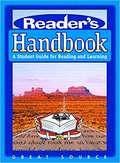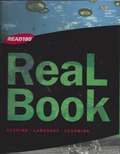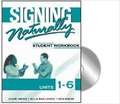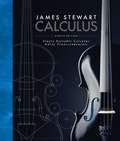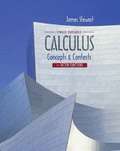Special Collections
District List: LAUSD High School Williams List of District Adopted and Approved Textbooks
- Table View
- List View
The Practice of Statistics (For the AP Exam)
by Daren S. Starnes and Dan Yates and David Moore and Josh TaborCombining a data analysis approach with the power of technology, innovative pedagogy, and a number of new features, this fifth edition has been updated to incorporate Learning Objectives in each section and link them to chapter reviews.
Precalculus
by Bert K. Waits and Gregory D. Foley and Daniel Kennedy and Franklin D. DemanaIn this Seventh Edition of Precalculus, a book that is designed for instructors and written for students, the authors encourage graphical, numerical, and algebraic modeling of functions as well as a focus on problem solving, conceptual understanding, and facility with technology.
Precalculus
by Josea Eggink and Samantha Falkner and Emily Kaffel and Sarah MaileNIMAC-sourced textbook
Precalculus with Limits
by Ron Larson and Robert Hostetler and Bruce H. Edwards and David C. FalvoWritten by the author, this manual offers step-by-step solutions for all odd-numbered text exercises as well as Chapter and Cumulative tests. In addition to Chapter and Cumulative tests, the manual also provides practice tests and practice test answers.
Precalculus with Limits with CalcChat® and CalcView®
by Ron Larson and Paul BattagliaNIMAC-sourced textbook
Precalculus With Trigonometry
by Paul A. FoersterIf you shoot an arrow into the air, its height above the ground depends on the number of seconds since you released it. In this chapter you will learn ways to express quantitatively the relationship between to variables such as height and time. You will deepen what you have learned in previous courses about functions and the particular relationships that they describe for example, how height depends on time.
Prentice Hall AP Spanish
by Gilda Nissenberg and Margarita Leicher-Prieto and Jose DiazNIMAC-sourced textbook
Prentice Hall Biology (California Edition)
by Kenneth R. Miller and Joseph S. LevineBiology isn't just a "subject" in school. Biology is the science of life itself. Biology is the study of what makes an eagle fly, a flower bloom, or a caterpillar turn into a butterfly. It's the study of ourselves--of how our bodies grow and change and respond to the outside world, and it's the study of our planet, a world transformed by the actions of living things. All organisms interact with one another and with the environment in ways that create our planet's web of life. Organisms make tropical rain forests and coral reefs, prairies and swamps--and farms and cities. Our interactions involve not only each other--but also the winds and ocean currents that tie our planet together. Human activity can change, and is changing, local and global environments in ways that alter our ability to produce food and protect ourselves from diseases. We are one on the global ecological level.
Prentice Hall Realidades, 1
by Peggy Palo Boyles and Myriam Met and Richard S. SayersNIMAC-sourced textbook
Prentice Hall World Geography
by Celeste Fraser and Thomas J. BeawaldWhat does it mean to learn world geography? It means more than gathering the facts, names, and data about the nations and lands of the earth. It means gaining a feel for, or an appreciation of, the richness and variety of the face of our planet.
Principles of Economics
by N. Gregory MankiwPRINCIPLES OF ECONOMICS continues to be the most popular and widely used text in economics classrooms today. The fifth edition features a strong revision of content in all 36 chapters while maintaining the clear, accessible writing style and precise presentation that are the hallmark of this highly respected author. Dozens of new applications emphasize the real-world relevance of economics for today's students through interesting news articles, realistic case studies, and engaging problems. The new edition also features an expanded instructor's resource package designed to assist in course planning and classroom presentation, as well as full integration of content with Aplia. "I have tried to put myself in the position of someone seeing economics for the first time. My goal is to emphasize the material that students should and do find interesting about the study of the economy. "--N. Gregory Mankiw.
Principles of Economics (Fourth Edition)
by N. Gregory MankiwPRINCIPLES OF ECONOMICS continues to be the most popular and widely used text in the Economics classroom. The 4th edition features a strong revision of content in all 36 chapters while maintaining the clear and accessible writing style that is the hallmark of the highly respected author. The 4th edition also features an expanded instructor's resource package designed to assist instructors in course planning and classroom presentation and full integration of content with Aplia, the leading online Economics education program. In the 4th edition Greg Mankiw has created a full educational program for students and instructors -- Experience Mankiw 4e. "I have tried to put myself in the position of someone seeing economics for the first time. My goal is to emphasize the material that students should and do find interesting about the study of the economy. " - N. Gregory Mankiw.
Psychology
by Wayne WeitenA more concise version of the introductory psychology text offering thorough coverage of the major theories (and controversies) in the field today. The focus is on ideas rather than facts, integrating research and application in the areas of biological behavior concepts, sensation and perception, consciousness, conditioning, memory, language and thought, intelligence and psychological testing, emotion, human development, personality theory, stress, psychological disorders, psychotherapy, and social behavior. Includes very jazzy color photographs and illustrations. Paper edition (unseen), $48.75. Annotation c. by Book News, Inc., Portland, Or.
Psychology
by Wayne WeitenThe Seventh Edition of Wayne Weiten's popular text, Psychology: Themes and Variations, continues to offer students a unique survey of psychology with three distinct goals: to show both the unity and diversity of psychology's subject matter; to illuminate the process of research and its intimate link to application, and to make the text challenging to think about and easy to learn from.
Psychology
by Alison Clarke-Stewart and Douglas A. Bernstein and Edward J. Roy and Louis A. PennerPsychology, 8/e, by Bernstein et al. continues to strike a balance between classical and contemporary topics with a comprehensive, research-oriented approach. The text takes an active learning approach with the use of hallmark pedagogical features such as Linkages, Focus on Research Methods, and Thinking Critically. Features new to the print program include streamlined content, integration of Positive Psychology throughout the text (by Chris Peterson, University of Michigan), and optional four-color "Neuropsychology" and "Industrial/Organizational Psychology" chapters available through Houghton Mifflin Custom Publishing. Leading-edge technology enhancements to the program include static and interactive eBooks; upgraded Flash-enabled Netlabs, Web tutorials, and animations; new interactive Concept Maps; new Active Learning and Critical Thinking Booklets; and a new DVD entitled Revealing Psychology.
Reader's Handbook
by Jim Burke and Ron Klemp and Wendell SchwartzLike all good guidebooks, this one has a few simple but important goals. (1) It will show you how to become a better reader. (2) It will introduce tools, tips, and strategies to help you read better and be more successful in school. (3) It will teach you how to monitor your reading. (4) It will improve your ability to write and talk about reading. (5) It will provide you with a quick reference guide. (6) It will introduce various kinds of readings.
Reader's Handbook
by Jim Burke and Ron Klemp and Wendell Schwartz and Mike McConnell and Phil LaLeikeNIMAC-sourced textbook
Signing Naturally
by Cheri Smith and Ella Mae Lentz and Ken MikosSigning Naturally is a student workbook for teaching sign language at every major college and university. It has impressive enhancements for both inside and outside of the classroom. Features include classroom exercises for Units 1-5 Signing Naturally is a student workbook for teaching sign language at every major college and university. It ensures that students use their book in class or out-of-class to study, topic index allows students to find specific parts of their homework that include key vocabulary and grammar. Culture notes and bios of important deaf people increase students' understanding of the Deaf World.
